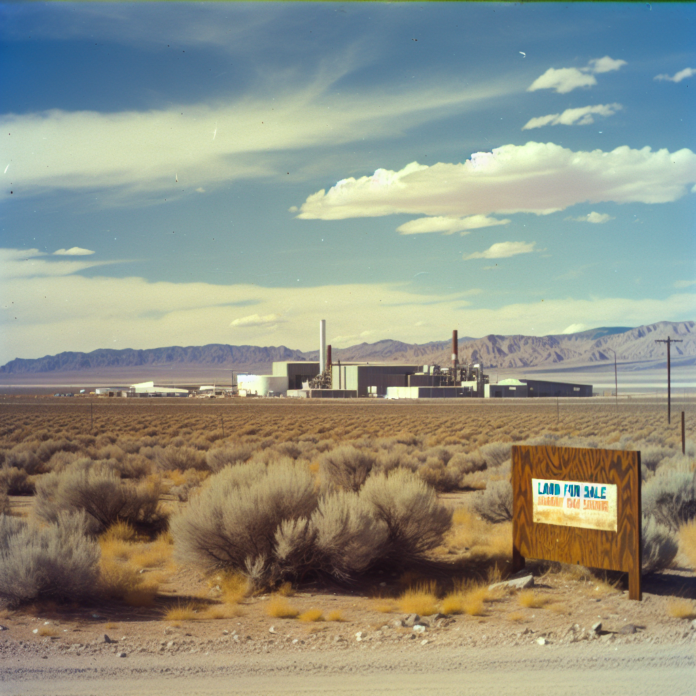American Battery Technology Company Expands Lithium-Ion Battery Production with Nevada Land Sale
Strategic Growth in Critical Minerals Industry
American Battery Technology Company (ABTC), a frontrunner in the domestic production and recycling of lithium-ion battery materials, is making strategic moves to scale operations by selling a sizable portion of its Nevada industrial land. The company’s decision to sell 26 acres of its McCarran, Nevada, industrial land highlights its sharpened focus on core operations and efficient resource allocation as it accelerates its domestic battery material production capabilities.
Land Sale as a Catalyst for Operational Focus
The McCarran site ha been used as a research and development hub and pilot location for ABTC’s advanced battery recycling and lithium hydroxide manufacturing technology. However, with the commissioning of its large-scale, commercial lithium-ion battery recycling facility now operational just nearby, ABTC is realigning its resources towards operational expansion rather than land holdings.
The 26-acre land parcel is being sold to Dragonfly Energy, a commercial lithium battery technology company. This transaction not only frees up capital for ABTC to reinvest in key infrastructure, but fosters synergy within the Nevada battery supply chain. Dragonfly Energy also stands as a significant client of responsibly produced lithium battery materials, making this an example of strategic vertical integration within the region.
Strengthening Domestic Battery Material Capabilities
Meeting Critical Mineral Demands
As the demand for electric vehicles (EVs) and renewable energy storage solutions continues to surge, the need for domestically sourced and processed battery materials is more crucial than ever. ABTC is uniquely positioned to fulfill this demand through its dual focus on sustainable extraction of critical materials and closed-loop battery recycling technologies.
The United States has long relied on foreign sources—from countries like China and South America—for its lithium and other battery-related minerals. With the expansion of facilities such as ABTC’s integrated lithium-ion battery recycling plant and primary lithium-hydroxide production, domestic self-reliance is becoming increasingly achievable.
Commercial-Scale Recycling Facility Now Commissioned
ABTC recently announced the successful commissioning of its first commercial-scale integrated battery recycling facility, also located in Nevada. This plant is crucial for recovering key battery metals, including lithium, cobalt, nickel, and manganese, from used batteries and manufacturing scrap.
This operational milestone supports U.S. efforts to establish a circular supply chain for battery materials—greatly reducing dependence on virgin mining practices and mitigating environmental impacts. By recovering and refining materials already in circulation, ABTC builds a more sustainable, secure battery material pipeline.
Aligning with the U.S. Government’s Clean Energy Goals
Public-Private Partnerships
ABTC has gained recognition and funding support through partnerships with federal agencies such as the U.S. Department of Energy (DOE). The company has received several substantial grants designed to accelerate the development and commercialization of its technologies. These investments underscore the DOE’s interest in bolstering an end-to-end domestic battery supply chain.
In 2022, ABTC was awarded a competitive federal grant under the Bipartisan Infrastructure Law to construct a commercial-scale battery material separation and purification plant. The funding supports ABTC’s efforts to close critical gaps in the battery manufacturing ecosystem. Strategic moves like the McCarran land sale allow the company to mobilize resources more effectively, advancing nationally significant goals for clean energy and electrified transportation.
Economic and Environmental Implications for Nevada
Driving Innovation in the “Battery Belt”
Nevada continues to emerge as a pivotal node in the United States’ battery production corridor, often dubbed the “Battery Belt.” With Tesla’s Gigafactory, Redwood Materials, and now expanded operations from ABTC and Dragonfly Energy, the region is rapidly becoming a hub for clean technology manufacturing and recycling.
This concentration of battery material innovation contributes to job creation, environmental stewardship, and regional economic development. The influx of high-tech facilities promises not only skilled employment opportunities but also economic resilience as states transition away from fossil fuel-dependent industries.
Commitment to Sustainability and Resource Efficiency
Both ABTC and Dragonfly Energy share an ethos of sustainability, focusing on clean energy products with responsible sourcing. ABTC’s technologies are designed to extract valuable metals with minimal environmental impact—leveraging hydrometallurgical and electrochemical processes rather than traditional smelting, which is carbon-intensive.
Moreover, the repurposing of industrial land underscores the broader shift toward optimizing existing infrastructure rather than engaging in unchecked land development. Through this transaction, resources are better aligned with production goals, reducing overhead and minimizing waste.
The Road Ahead for American Battery Technology Company
Scaling Production and Deployment
With the McCarran land sale and newly commissioned recycling facility, ABTC is well-positioned to scale up its activities and meet growing industry demands. The company is expected to ramp up lithium production as the United States pushes toward ambitious EV adoption targets, spurred by recent federal incentives and policy directives.
ABTC’s future roadmap includes completing its Tonopah-based primary lithium-hydroxide manufacturing facility. Once operational, this state-of-the-art plant will complement its recycling facility and create a fully domestic supply chain for battery-grade lithium compounds—essential for the nation’s energy transition.
Investor and Industry Confidence
As confidence builds across both public and private sectors in ABTC’s innovative recycling and refining technologies, the company continues to attract long-term investment. High demand for recycled critical minerals ensures strong market positioning, while strategic collaborations, such as this land transaction with Dragonfly Energy, reaffirm ABTC’s role in shaping the North American battery ecosystem.
Conclusion: A Strategic Move for Sustainable Growth
The strategic sale of ABTC’s McCarran industrial land marks more than just a property transaction—it’s a bold repositioning of the company toward greater production efficiency, financial flexibility, and alignment with national clean energy priorities. By receiving capital through land divestiture while maintaining vital partnerships within the Nevada battery sector, ABTC is laying a strong foundation for sustained growth and innovation in battery material processing.
With its unique approach to vertically integrated recycling and advanced lithium production, American Battery Technology Company continues to drive momentum in the domestic energy landscape—paving the way for a secure, circular, and sustainable supply chain for critical battery components.


